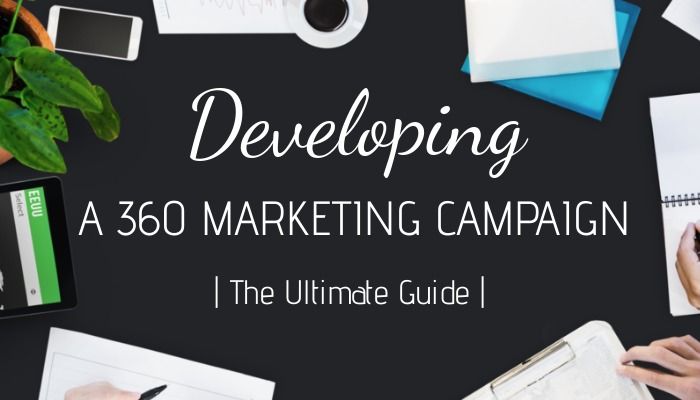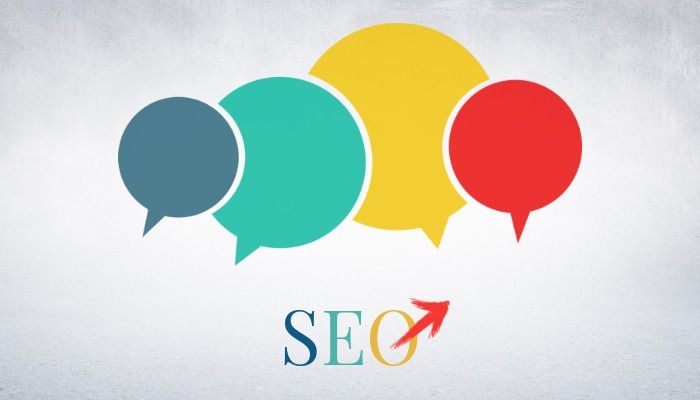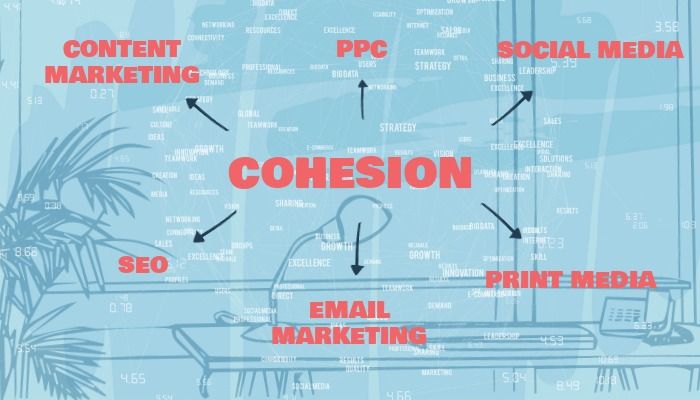Discover what exactly 360 marketing is and how you can leverage its power to grow your business. Efficient 360-degree marketing encompasses multiple channels to engage with your target audience at various touchpoints in their buyer’s journey.
The holistic view of this type of marketing maximizes the opportunities through the multiple channels used. Given you know the best channels to get in touch with your customers, a 360 marketing strategy can provide excellent results.
Find out how to build your results-driven plan and which channels suit your audience and business.
What is 360 Marketing and Why Use It?
With 360 marketing, marketers ensure they reach their target audience no matter where they hang out both online or offline. Depending on the type of business or products, it can involve various combinations of traditional and digital marketing channels.
For example, you might see an ad for breakfast cereal on a billboard. Later when you’re watching your favorite TV show, there’s a commercial break. You get to see the breakfast cereal ad in motion. Scrolling through your Facebook feed on the bus the next morning, you glimpse an ad for that same cereal.
An efficient 360-degree marketing campaign uses various types of media or channels to ensure you reach most or all of your target audience. When creating your marketing strategy, take a holistic approach and make sure you touch upon every point of contact with your customers in their buyer’s journey.
For this to work, your branding needs to be consistent across all marketing channels. Don’t confuse your audience with different messaging and provide the same smooth customer experience on all channels. As a result, 360 marketing is effective because it maximizes your opportunities to get your brand in front of potential customers and increases the likelihood that you engage them on the channel that they’re most responsive on.
How to Build a Results-Driven 360 Marketing Strategy
Even though theoretically you can use as many channels as you like for your 360-degree marketing plan, you’re likely to have time and budgetary constraints that prevent you from spreading yourself too thin.
Covering all available channels is also not necessary. For better results, narrow your focus and work with the type of media or platforms that a majority of your target audience is engaging with.
Know Where Your Target Audience Is
Before you take the plunge and set up a plan for your 360 marketing strategy, you need to have some knowledge about your target audience that you can use as guiding principles. Build the foundation for your sales strategy by researching who your customers are and where they’re most receptive to the message you want to convey.
Start by gathering data you currently have from tools that provide you with metrics like Google Analytics and insights from social media platforms. Find commonalities to give you ideas for who your customers are. Explore demographics, interests, and how they find you to create several customer personas.
Demographics
Age: Different age groups respond to different types of messaging and platforms. For example, Gen Z may prefer engaging with brands on TikTok, while Baby Boomers might be more active on Facebook.
- Gender: Understanding the gender distribution of your audience can help in creating targeted campaigns that resonate more deeply with either men, women, or non-binary individuals.
- Income Level: This helps in setting the right pricing strategy and choosing products that align with the financial capacity of your audience.
- Education: Education level can influence the type of content your audience finds appealing, such as more technical versus general information.
Psychographics
- Interests: What are your audience's hobbies and passions? Understanding this can guide you in creating content that captures their attention.
- Hobbies: Knowing what activities your audience enjoys can help tailor your marketing efforts to align with these interests, making your brand more relatable.
- Values: What values do they hold dear? Aligning your brand’s messaging with your audience’s values can build trust and loyalty.
- Lifestyle: Are they urban professionals, busy parents, or college students? Knowing their lifestyle helps in crafting messages that fit seamlessly into their daily routines.
Behavioral Data
- Purchasing Behavior: Analyze patterns in how and when your audience makes purchases. This can inform your sales cycles and promotional strategies.
- Brand Loyalty: Understand the factors that drive loyalty among your customers. Are they repeat buyers? Do they recommend your brand to others? This can help in designing loyalty programs and retention strategies.
- Product Usage: How do customers use your products? This information can help in creating content that educates and informs, leading to better user experiences and satisfaction.
Determine Your Purpose and Plan
Once you’ve got an idea about the channels you should go for, think about what exactly the purpose of your campaign is. Define a structure to be used for your plan based on whether you’re looking to increase brand awareness, launch a product, or reposition your business.
Depending on that purpose, take a look at the marketing channels you determined from your customer research. Use it to narrow your focus further and fit better with your budget and resources. Define goals that you’ll be working towards and build your campaigns around.
Map Out Your Customer Journey and Touchpoints
Take a closer look at the journey your customers take from the moment they find out about your business or products to making a purchase and beyond when they ideally become brand advocates. Points of contact change throughout this journey. Determine which channel to use for which stage with the help of your customer personas.
Accordingly, your strategy and content should be different for each of those stages. Reach your audiences in the right place at the right time with the best type of channel to maximize success.
For example, in the middle of the buyer’s journey or the consideration stage, customers are looking at different solutions. At this stage, your 360-degree marketing strategy that work should ensure that you have a piece of valuable content ready that highlights how your products or services can help. This should then be delivered to your audience on the channel they’re most likely to use to look for more in-depth information.
Establish the Channels You’re Going to Use
When you’re making a list of the channels you’re going to use for your 360-degree marketing strategy, make sure you’ve considered every traditional and digital marketing platform available to you. For a well-rounded approach, you might have to venture into new territory you’ve never gone into before.
The holistic approach of 360 marketing helps you to nurture leads providing relevant and consistent content to guide them further down the path towards conversion. Make sure your plan also includes a strategy to encourage anyone who purchased to become a repeat customer.
Here are some best practices to use for the various channels you can incorporate in your 360 marketing strategy:
Marketing Channels and Their Uses
Channel | Primary Use | Key Metrics |
Social Media | Brand awareness, engagement, customer interaction | Likes, shares, comments |
Email Marketing | Lead nurturing, customer retention | Open rates, click-through rates |
SEO | Organic traffic, brand credibility | Search rankings, organic traffic |
PPC Advertising | Immediate visibility, lead generation | Clicks, conversions |
Content Marketing | Thought leadership, customer education | Engagement, time on site |
Get Found Online Through Search Engine Optimization
Our first instinct when we don’t know the answer to a question or need more information is to google it. This way, Google and other search engines have become part of our everyday lives. Every business has a website but not all of them manage to appear on the first page of a search engine results page (SERP) when customers are looking for the answer to a query.
Search engine optimization or SEO is the practice of improving your website’s pages to rank higher on SERPs and increase organic traffic. Get started with some audience and keyword research to give you an idea of what your customers are looking for. You might get some unexpected results. As an expert in your field, it’s easy to forget what kind of questions an audience that is new to it may have.
Create branded content around the keywords you found and optimize your titles, URL, and meta descriptions. While you’re writing, keep in mind that your goal is to write for humans rather than the search engines’ algorithms. For maximum usability and better rankings, don’t include anything that slows down your website like images with large file sizes. Page speed is now a critical SEO factor.
Make sure you also link to other relevant high-quality websites and attract links to your site as well. If your content is engaging and valuable, you’ll be able to create a natural link profile for your website that boosts your rankings. Be prepared for your SEO efforts to have a gradual impact. It can take months before you see the results of your optimization.
Key SEO Actions
Audience & Keyword Research
- Use tools like Google Keyword Planner, SEMrush, and Ahrefs.
- Understand the search intent behind keywords.
- Identify unexpected keywords that your audience might use.
Content Creation
- Create valuable, engaging content around your keywords.
- Focus on writing for humans, not just search engines.
- Ensure content answers the questions and needs of your audience.
On-Page Optimization
- Include keywords in titles, URLs, and meta descriptions.
- Structure content with clear headings and subheadings.
- Use keyword variations naturally within the content.
Page Speed Optimization
- Compress images and minimize file sizes.
- Remove unnecessary plugins and scripts.
- Use tools like Google PageSpeed Insights for recommendations.
Link Building
- Link to high-quality, relevant websites.
- Attract backlinks by creating valuable, shareable content.
- Maintain a natural link profile by avoiding link farms or spammy practices.
Technical SEO
- Ensure mobile-friendliness and responsive design.
- Implement a clean, user-friendly URL structure.
- Use XML sitemaps and fix any crawl errors.
Use Pay-Per-Click Advertising for Quick Results
Pay-per-click or PPC advertising is one of the quickest ways to get your products in front of as many people as possible and see a return on your investment almost instantly. PPC encompasses text, display advertising, social media, remarketing, and Google Shopping ads.
Even though it might be attractive for its speedy results, PPC can also use up your budget quickly. Paid advertising should always be just one part of your 360 marketing strategy and works best in tandem with other marketing te
chniques.
In connection with the work you do on other platforms, PPC can be a booster for brand awareness and sales until SEO and social media take off. The traffic coming through ads is only as good as your setup on the other side of a link click. Make sure you link to the relevant landing page where your audience can take action to buy your products or book your services.
Conduct A/B testing to see how you need to tweak different elements in your ads. Try various versions of copy, designs, or calls to action to see what performs best.
Another efficient way to get the most out of your PPC campaigns is to use remarketing. When you’ve got this feature enabled, users that visited your site without making a purchase can be retargeted and shown your ads again to give them another opportunity to click through and buy.
Achieve Higher Engagement Rates on Social Media
As part of your research on which marketing avenues to use to reach your audience, find out which social media channels you can find most of your target audience on. Social media is its own little world and you can’t create an engaging presence on all platforms.
Each social network is different and your posts need to be adjusted to their specific environment to be engaging. For example, if you’re fine-tuning your approach your strategy on Twitter will differ from your marketing efforts on Facebook.
Use your research to pick the social channels you want to focus on and where you think you can start growing an audience organically through creating highly engaging posts. Go in with a plan and make social media posts part of your overall content calendar. Use social media management tools to schedule your posts for popular times with your audience and to multiple platforms simultaneously.
Video and live streams generally do well on social, so think about the unique and entertaining content you can provide in those formats. Talk to your audience via polls or ask them to submit their own photos or videos if they love your products or services. People love to hear about other people’s experiences or stories. Feature this user-generated content on your feeds to drive more engagement.
Once you’ve gained a good following, you can also look into running ads on social media to give your presence and sales a boost. Keep an eye on the latest social media trends and the new online shopping features that are constantly expanding to give users the ability to make more purchases straight through their favorite social media platform.
Enhance Your Strategy with Content Marketing
When you’re looking at content marketing as part of your 360-degree marketing strategy, brainstorm which types of content work best for your business. Use your audience research to determine what could be most valuable to them.
Produce various types of content like infographics, blog posts, video tutorials, how-to guides, case studies, whitepapers, or ebooks to offer a variety. Test which types resonate best with your target audience. Ensure your content is helpful and shows how your products or services solve customer problems.
Essentially, you’re offering free advice that leads readers to take action. Be sure to also include other related content that shows that you’re an expert in your industry and entices other websites to link to you.
When you’re creating your content calendar as part of your 360-degree marketing strategy, make sure you have a good mix of evergreen content and articles you can repurpose. This way, your workload can be reduced in the future as you share evergreen topics multiple times throughout the year or update an existing piece.
Nurture Leads with Email Marketing
Efficient email marketing starts with a solid list of contacts who want to hear from you. It’s still one of the most effective advertising marketing techniques to nurture leads and build trust with your target audience.
By segmenting your mailing lists, you can customize and automate your messages to send tailored emails to the right audience. Link your customer relationship management (CRM) tool with your email marketing automation tools, software to create campaigns that are personalized and include relevant content.
For example, you can set up triggers such as the download of your lead magnet or a purchase on your website. Depending on the action taken, your customer gets a follow-up with more content relating to your lead magnet or a thank you email with a discount code for the next time they buy one of your products. These are automatic responses that can be set up and don’t require a member of the sales team to respond.
Email marketing only works if your emails are as personalized as possible. You have to know the pain points of your audience and speak their language. That starts with a subject line and preview text that makes them want to read more.
Try to figure out what works best for your audience or different segments. Apply A/B testing and change a few elements in your email like the colors of your call to action buttons, the placement of your images, or the style of your copy. Monitor results to see what performs best.
Impress Your Audience with Print Media Advertising
Although the world has gone mostly digital, traditional advertising spaces like billboards, posters, or direct mail can still be used effectively. Due to most businesses now going for digital marketing channels, there can be less competition. On the other hand, you also need to be exceptionally creative to attract attention with print media.
Quality is more important, particularly in the printing world. Eye-catching design and quality paper can make the difference between your audience stopping to look more closely or throwing your direct mail or flyer away after only a glance.
Ensure your copy and design work together to convey a short key message and provide a clear call to action. Find the balance between appealing and readable when choosing fonts that fit with the rest of your design. Make sure your print and digital marketing channels match up to build a consistent brand.
To make a print media campaign even more effective, go for a combination of both traditional and digital. Include your social media handles and website URL on billboards. Or you can add a QR code to your posters or direct mail. QR codes are a great way to take your customers from your physical advertisement to a landing page where they can enter a competition, redeem a discount, or contribute images for a user-generated content campaign.
Go Back to the Roots with Face-to-Face Marketing
Meeting your customers face to face and having a conversation can be part of your 360 marketing strategy and a great way to communicate your brand and get some feedback. There are a few different ways to get in touch with potential customers.
You can create valuable opportunities through helping the local community or collaborating with a nonprofit. A more direct way to see your customers in person and catch them when they’re more open to directly hearing from you are trade shows.
At trade shows, you can interact with your target audience as they pass by your booth. To show your expertise at scale, look for speaking opportunities at conferences or other events that let you speak to an even wider audience all at once.
Your goal for face-to-face marketing should be to put yourself and your business out there and build trust instead of repeating a sales pitch. You need to build relationships first before you sell.
Example of a Face-to-Face Marketing Strategy
- Partner with a local nonprofit to co-host a charity event.
- Sponsor a booth at a community fair to distribute branded merchandise.
- Organize a neighborhood clean-up day with your team wearing branded shirts.
- Set up a visually appealing booth at an industry trade show.
- Offer live product demonstrations and free samples.
- Collect leads by offering a raffle or giveaway for booth visitors.
- Secure a speaking slot at a major industry conference.
- Present a case study showcasing your expertise and successful outcomes.
- Host a networking reception post-presentation to connect with attendees.
- Host a free workshop on the latest industry trends.
- Provide attendees with actionable insights and practical tools.
- Follow up with attendees via email to maintain the connection.
- Create a themed pop-up shop in a popular urban area.
- Offer interactive experiences, such as product trials or DIY stations.
- Promote the event on social media and encourage user-generated content.
- Organize an exclusive event for your top customers.
- Offer sneak peeks of new products and special discounts.
- Use the event to gather testimonials and feedback.
By incorporating these face-to-face marketing methods, you can enhance your brand's presence, build stronger relationships with your customers, and gain valuable insights that can inform your broader 360 marketing strategy.
Build Your Brand Through Storytelling with Radio and TV Commercials
If you’re looking to build stronger brand awareness as part of your 360-degree marketing strategy, consider creating a radio or television commercial to tell your story. These commercials are an effective way to build brand recognition with a wide audience in a short period of time.
Craft a simple story that pulls at your audience’s heartstrings or gets your key advertising message across in an entertaining way. Create your storyboard and run it past your team to see whether it resonates or if your storytelling needs a few tweaks.
You can hire a media company or have a go at recording and filming your commercial yourself on a low budget. When you’ve got the final version of your TV commercial ready, be sure to negotiate the costs of airing it with several stations. Find out where you can get the best time slots for the least money.
Depending on your niche, target your audience with commercials on specific radio stations or during shows that are related to your industry. You can measure incoming calls from your radio commercials through dynamic phone numbers.
Ensure Cohesion Across All Marketing Channels
Once you’ve picked some of the above marketing channels that fit best with your audience and business, it’s time to build your 360 marketing strategy. By now you should have a deeper understanding of your target audience and the touchpoints at which they enter the sales marketing funnel.
Use this knowledge to develop a plan with your chosen channels. When you’re doing so, make sure you have a core message in mind that helps you with keeping consistent whether you’re communicating with your audience through email or billboards.
Ensure all components of your campaigns work together smoothly and represent your brand at all times. Cohesion also means that every part of the buyer’s journey has to be set up to link in with each other. For example, the landing page has to be ready for when your printed QR code sends your customers there before your flyers are distributed.
Monitor Your Results and Track Conversions
As part of your 360 marketing strategy, have a plan ready for how you want to monitor results and track conversions. Depending on your chosen channel, check metrics as frequently as every day to be able to react quickly if any improvements are needed.
Regularly looking at data can tell you if you got your audience research right or if their needs have changed. Flexibility is key as you change course according to emerging trends and information you get through testing your theories via your marketing campaigns.
Employ tracking techniques such as setting up conversion goals in Google Analytics to see how successful your 360-degree marketing strategy truly is. Find out which channel works best for you to get your customers to convert. Investigate what performs best while dropping avenues that don’t.
The true power of a 360-degree marketing trends strategy comes from knowing which communication channels are the most effective to get in touch with your audience. Thorough research takes time but results in a better return on investment in the long run.
It also ensures that your brand is present at every touchpoint where customers can enter the sales funnel. This invaluable knowledge helps you create a plan across various marketing channels.
While you establish the techniques that are going to be part of your 360 marketing strategy, focus on brand consistency to ensure your core advertising message is always the same. This way, you build trust and make your brand more memorable.
Be clear about the purpose of your 360 marketing and define goals for each channel to measure results. Keep an eye out for what’s working or emerging trends to adjust your plan accordingly. Apply this dynamic approach to craft successful campaigns.

Elisabeth Strasser
Having graduated with a Professional Writing MA with distinction, Lizzie set out to gain her copywriting and digital marketing experience in Cork City.
An Austrian with a love for Ireland, Lizzie loves exploring Irish folklore and storytelling. Her favourite DW tools are: Youtube Outro Maker and Add Logo to Video tools.










